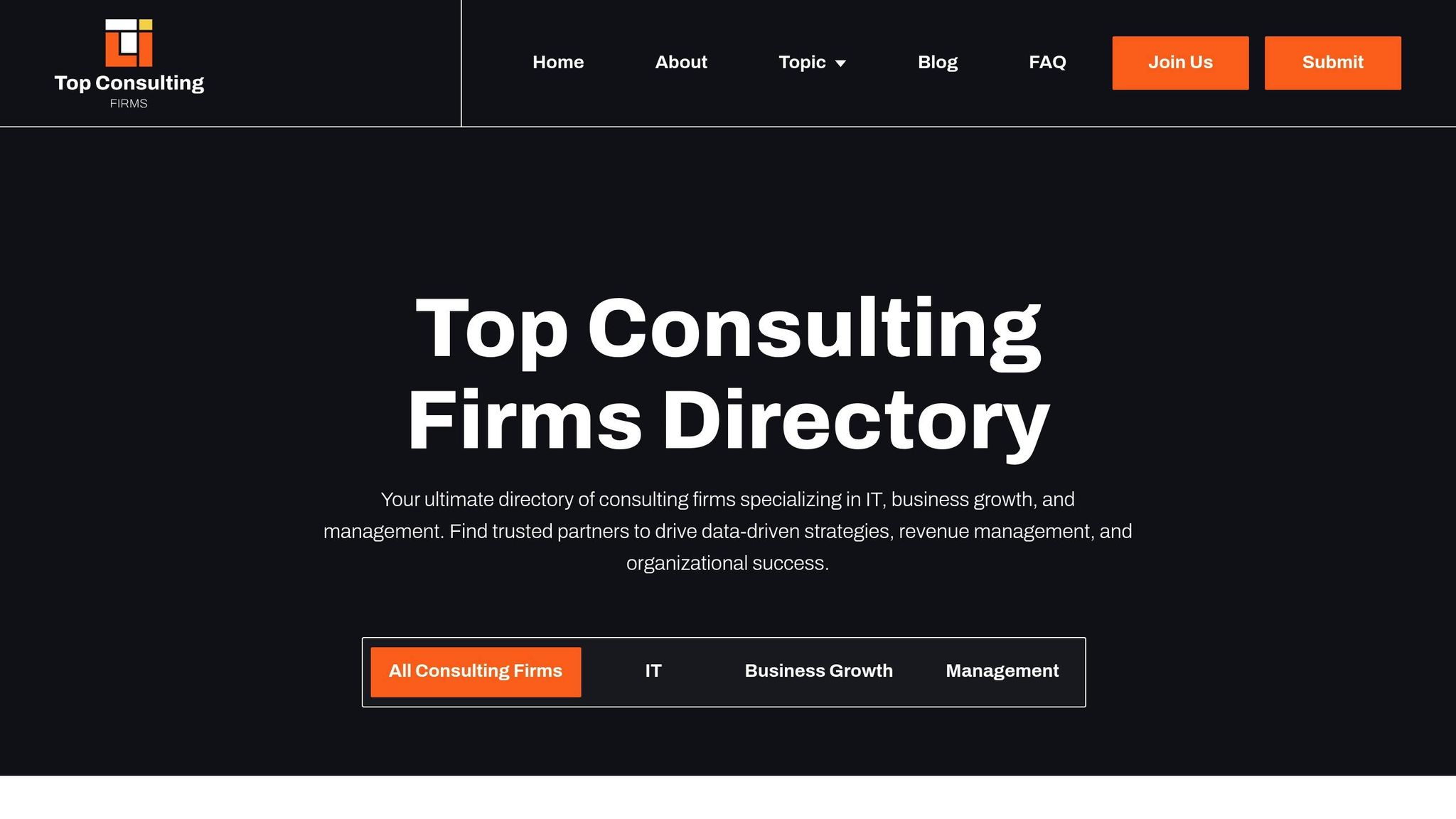When a company’s actions don’t match its stated values, trust erodes and reputations suffer. Misaligned values can lead to employee disengagement, public backlash, and financial losses. Leaders must ensure alignment between values and actions to protect their brand and foster trust.
Key Takeaways:
- Value Misalignment Risks: Leadership gaps, inconsistent operations, and toxic workplace cultures damage trust and reputation.
- Consequences: Loss of stakeholder trust, social media amplification of missteps, financial setbacks, and operational inefficiencies.
- Solutions:
- Set clear, actionable values.
- Regularly assess value alignment through surveys and feedback.
- Integrate values into hiring, performance reviews, and decision-making.
- Seek expert help if internal efforts fall short.
Bottom line: Aligning actions with values isn’t optional - it’s essential for building trust and long-term success.
Work Culture and Corporate Reputation
Understanding Risk from Company Values
Keeping a company's actions in sync with its stated values is critical for safeguarding its reputation and maintaining long-term trust with stakeholders. Even small gaps between what a company says and what it does can erode trust and harm its brand.
Types of Value Misalignment
Leadership Behavior Gaps
When leaders fail to practice the values they promote, it damages their credibility within the organization.
Operational Inconsistencies
If daily operations don’t align with the company’s promoted values, it creates noticeable contradictions between what is promised and what is delivered.
Cultural Practice Mismatches
A company might claim to value ideas like innovation or work-life balance, but if internal practices and reward systems don’t support these, the culture suffers.
These misalignments not only disrupt internal harmony but also weaken how the company is seen by the public.
Impact on Company Image
- Loss of Stakeholder Trust: When stakeholders - such as customers, employees, investors, and partners - detect inconsistencies, they may start doubting the company's integrity.
- Amplification Through Social Media: Even small missteps can be magnified on social platforms, spreading quickly.
- Financial Fallout: Damaged reputation can lead to lost customers, higher employee turnover, and fewer partnership opportunities.
To avoid these risks, companies should regularly evaluate how well their actions reflect their values. Integrating these values into everyday decisions and operations is key to preserving both trust and reputation.
Main Problems with Value Gaps
Common Value Conflicts
When an organization’s actions don’t match its stated values, it creates serious issues that can damage both its reputation and effectiveness. Here are some of the most common types of value misalignment:
Leadership Actions vs. Values
When leaders behave in ways that contradict the values they promote, it erodes trust. For example, executives who champion work-life balance but expect employees to work weekends send a mixed message, undermining their credibility.
Policy-Practice Disconnect
Organizations often claim to prioritize things like diversity or innovation but fail to back up these claims with the necessary resources or actions. This disconnect creates skepticism about the organization’s true priorities.
Cultural Toxicity
Misaligned values can lead to toxic workplace environments, characterized by:
- Growing cynicism among employees
- Decreased engagement and morale
- More frequent ethical issues
- Poor teamwork and collaboration
These cultural problems don’t just stay internal - they often lead to financial and reputational risks.
Business and Image Costs
The consequences of value gaps go beyond internal culture and can result in measurable business losses.
Financial Impact
When values and actions don’t align, companies can face:
- Higher turnover, leading to increased hiring and training expenses
- Lower productivity due to disengaged employees
- Declining customer loyalty
- Missed business opportunities
Reputational Damage
Value misalignment can tarnish a company’s reputation, especially in today’s digital age where public scrutiny is constant. Common outcomes include:
- Negative employee reviews on platforms like Glassdoor
- Public backlash on social media
- Loss of trust from stakeholders and partners
- A shrinking market share
- Damage to the overall brand image
Operational Impact
These gaps also disrupt day-to-day operations, causing:
- Slower decision-making processes
- A drop in innovation and creative problem-solving
- Inconsistent customer experiences
- Declining quality in products or services
Over time, these issues tend to snowball, creating a cycle of poor performance that can only be addressed with a significant cultural shift.
sbb-itb-97f6a47
Steps to Fix Value Problems
Setting Clear Company Values
For company values to make an impact, they need to be reinforced through both actions and systems. Leaders should focus on values that are:
- Specific and measurable: Avoid vague statements like "we value innovation." Instead, outline clear behaviors that demonstrate innovation in action.
- Aligned with business goals: Values should directly support what the company aims to achieve.
- Consistently communicated: Share values through meetings, internal updates, and decision-making processes.
To ensure these values become part of everyday work, provide clear examples of how they translate into behaviors. For instance, if "collaboration" is a key value, define specific actions such as:
- Participating in cross-functional projects
- Hosting regular knowledge-sharing sessions
- Setting goals collaboratively
- Using peer review systems for important decisions
Once values are defined, regularly evaluate whether daily practices align with them.
Checking Value Alignment
Regular assessments can uncover discrepancies between what the company says it values and what actually happens. Here are some ways to monitor alignment:
Formal Assessment Methods
- Conduct annual culture surveys to measure alignment with values.
- Use regular pulse surveys to track progress on specific value areas.
- Include value-based metrics in 360-degree feedback.
- Analyze exit interviews to identify cultural gaps.
Informal Monitoring
- Have leaders conduct walk-arounds and team check-ins.
- Create open channels for employees to share concerns.
- Discuss values during team meetings.
- Observe how decisions are made and whether they reflect stated values.
Building Values into Daily Work
After assessing alignment, focus on weaving values into everyday operations:
Recruitment and Onboarding
- Ask value-based questions during interviews to assess cultural fit.
- Evaluate candidates for alignment with company values, not just technical skills.
- Design onboarding programs that emphasize the importance of values.
Performance Management
- Include value alignment as part of performance reviews.
- Reward and recognize behaviors that reflect company values.
- Address misalignment quickly and directly.
- Tie performance incentives to contributions that support the company’s culture.
Decision Making
- Use values as a guide during strategic planning.
- Refer to them when approving projects.
- Consider how decisions impact company values when assessing risks and allocating resources.
Getting Expert Help for Value Issues
While internal efforts can address cultural alignment, bringing in outside expertise often provides new perspectives and effective solutions.
How Consultants Assist with Values
If internal strategies aren't enough, consultants can step in with specialized knowledge and a clear, structured approach. They tackle cultural misalignments by focusing on three key areas:
Cultural Risk Assessment
- Examine current values and pinpoint gaps between stated values and actual behaviors.
- Identify potential risks to your reputation caused by cultural inconsistencies.
Strategic Planning
- Develop actionable plans to address critical gaps.
- Design frameworks to guide value-based decision-making.
- Offer tools and methods to track and measure cultural health.
Change Management Support
- Help implement communication strategies, training programs, and accountability systems.
These services provide a focused way to address cultural challenges with external expertise.
Finding Help Through Top Consulting Firms Directory

The Top Consulting Firms Directory is a resource for organizations seeking firms with experience in cultural risk management and value alignment. The directory includes firms specializing in areas like:
- Strategic management and organizational change
- Risk management and reputation protection
- Digital transformation and cultural shifts
- Leadership development and value integration
When choosing a consulting firm, consider these key factors:
Proven Results
- A history of success in driving cultural transformation
- Expertise in your specific industry
- Evidence of measurable outcomes
Comprehensive Services
- Ability to conduct thorough cultural assessments
- Support for implementing changes
- Seamless integration with your existing processes
Cultural transformation is a long-term effort. Partnering with experienced consultants can help organizations navigate the process effectively while reducing potential risks to their reputation.
Conclusion
Cultural risks can pose a serious threat to an organization's reputation. When there’s a gap between the values a company promotes and the way it operates, the consequences can include both reputational damage and financial losses. To address this, organizations need to ensure their culture aligns with their stated values.
Achieving this alignment involves several key steps: conducting regular assessments, maintaining open communication, making decisions rooted in core values, and consistently monitoring practices. These efforts help create a strong foundation for addressing cultural risks effectively.
When internal efforts aren’t enough, turning to expert consultants can make a difference. The Top Consulting Firms Directory provides access to professionals with proven strategies for managing cultural risks and aligning values. Their expertise can guide organizations through complex transitions and help protect their reputation.
Tackling cultural risks requires a long-term commitment to aligning values with actions. By acting decisively and seeking professional help when needed, organizations can better position themselves to thrive in a business world that increasingly values integrity and consistency.
FAQs
How can leaders ensure their company's actions reflect its core values?
To ensure a company's actions align with its core values, leaders should start by clearly defining those values and embedding them into everyday operations. Regularly assess whether business decisions, policies, and employee behaviors reflect these principles.
Engage employees and stakeholders by gathering feedback through surveys or open discussions to identify any gaps between stated values and actual practices. Additionally, setting measurable goals tied to the company’s values and monitoring progress can help maintain alignment. A proactive approach will not only prevent cultural misalignment but also protect the organization's reputation.
How can misaligned company values impact both financial performance and reputation?
Misaligned company values can have serious consequences for both financial performance and organizational reputation. For example, if a company promotes sustainability but is later exposed for unethical environmental practices, it risks losing customer trust, facing public backlash, and even encountering legal penalties. This can lead to decreased revenue, damaged partnerships, and a tarnished brand image.
Additionally, internal misalignment - such as a disconnect between leadership and employees on core values - can result in low morale, high turnover rates, and decreased productivity. These issues not only affect operational efficiency but also weaken the company’s ability to attract and retain top talent. Addressing cultural risks proactively is essential to safeguarding both reputation and financial health.
When should a company bring in external consultants to address cultural misalignment?
Companies should consider seeking external consulting help when cultural misalignment starts to impact employee morale, productivity, or the organization’s reputation. This could include situations where there’s a noticeable disconnect between leadership values and workplace culture, or when internal efforts to resolve these issues have been unsuccessful.
External consultants bring a fresh perspective and specialized expertise to identify root causes and implement tailored solutions. Acting proactively can help mitigate risks and protect your company’s reputation in the long run.


